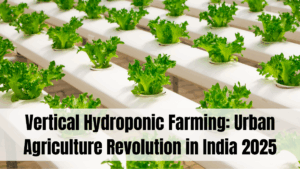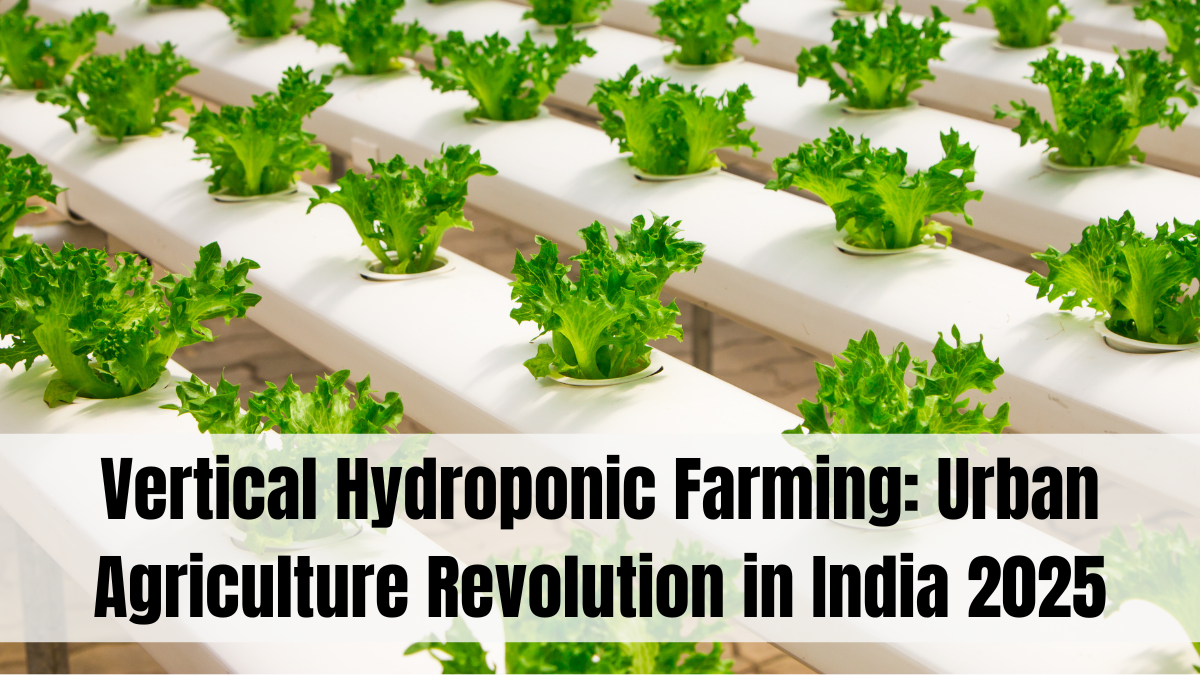Urbanization in India has led to limited outdoor space for gardening, especially in apartments. In 2025, hydroponic gardening India 2025 is rapidly gaining traction as a space-efficient, soil-free cultivation method that allows city dwellers to grow fresh vegetables, herbs, and flowers vertically, maximizing limited balconies or terraces.
This article explores new vertical hydroponic systems, benefits, setup guides, best plants, and the future of urban farming in Indian apartments.

What Is Hydroponic Gardening and Why Vertical?
Hydroponics is a method of growing plants without soil, using nutrient-rich water solutions. Vertical hydroponics arranges plants in stacked layers or towers, maximizing yield per square foot, which is perfect for small urban spaces.
Key advantages include:
-
Faster growth due to optimized nutrient delivery.
-
Less water consumption compared to traditional gardening.
-
No need for soil reduces pest and disease issues.
-
Enables gardening in concrete apartments with no garden plot.
-
Easy to manage and harvest with compact footprint.
Vertical designs further save horizontal space, making gardening possible in balconies or indoor corners.
Popular Vertical Hydroponic Systems in India 2025
-
Tower Gardens: Vertical cylindrical towers with plant slots around them, ideal for leafy greens and herbs.
-
Wall-Mounted Planters: Modular panels fixed to walls with hydroponic channels, allowing vertical stacking of plants.
-
Stacked PVC Pipe Systems: DIY-friendly, cost-effective vertical planters using drilled PVC pipes for water flow.
-
Automated NFT Systems: Nutrient Film Technique setups that continuously flow water over plant roots in vertical trays.
-
Aeroponic Vertical Gardens: Advanced systems that mist roots with nutrients in a vertical frame for rapid growth.
These systems range from budget DIY kits to commercial-ready units suitable for Indian homes.
Setting Up Your Vertical Hydroponic Garden: Step-by-Step
-
Select Location: Choose a balcony, terrace, or well-lit indoor spot with 6+ hours of sunlight or supplement with grow lights.
-
Choose a System: Based on space, budget, and plants you want to grow. DIY options work well for beginners.
-
Prepare Nutrient Solution: Use commercially available hydroponic nutrients or prepare organic blends.
-
Plant Selection: Opt for leafy greens (lettuce, spinach), herbs (mint, coriander), cherry tomatoes, and small peppers.
-
Install System: Assemble vertical planters or towers, set up water pumps if automated, and ensure proper drainage.
-
Plant and Monitor: Insert seedlings or seeds, monitor pH (5.5–6.5), nutrient levels, and water temperature regularly.
-
Maintenance: Prune plants, clean system parts, and replenish nutrients to maintain healthy growth.
Consistency and monitoring ensure success.
Benefits of Vertical Hydroponic Gardening in Indian Apartments
-
Maximized Space Usage: Vertical design lets you grow more plants in limited areas.
-
Water Efficiency: Hydroponics uses up to 90% less water than soil gardening.
-
Pesticide-Free Produce: Controlled environment reduces pests and need for chemicals.
-
Year-Round Gardening: Grow fresh vegetables irrespective of soil conditions or seasons.
-
Improved Air Quality: Indoor plants help purify air, enhancing living environment.
This method supports healthy eating and sustainable living in crowded cities.
Challenges and Solutions for Urban Hydroponics
-
Initial Setup Cost: Can be higher than traditional gardening, but long-term savings on produce offset this.
-
Technical Know-How: Requires understanding nutrient management and system maintenance; beginner kits with guides help.
-
Power Dependence: Automated systems need electricity; battery backups or manual options mitigate outages.
-
Limited Crop Variety: Root vegetables and large fruiting plants are less suited; focus on greens and herbs.
-
Sunlight Access: Use supplemental grow lights if natural light is insufficient.
With planning and learning, these challenges are manageable.
Future Trends in Hydroponic Gardening India 2025
-
Integration with IoT sensors for real-time monitoring of water, nutrients, and plant health.
-
Development of affordable modular kits designed specifically for Indian apartment sizes.
-
Expansion of community vertical gardens in urban complexes.
-
Increased interest in hybrid systems combining hydroponics with aquaponics.
-
Collaboration with local startups to innovate cost-effective solutions tailored for Indian climates.
These advances will democratize urban farming further in India.
FAQs
What plants grow best in vertical hydroponic gardens?
Leafy greens like lettuce, spinach, herbs such as basil and coriander, cherry tomatoes, and small peppers.
Do I need grow lights for indoor hydroponics?
Yes, if natural sunlight is limited, LED grow lights support photosynthesis effectively.
How often should I change the nutrient solution?
Typically every 1–2 weeks, depending on plant consumption and system size.
Is hydroponic gardening expensive for beginners?
Starter kits are affordable, and DIY options reduce costs; investment pays off with fresh produce.
Can hydroponic gardening be done year-round in Indian apartments?
Yes, controlled conditions and supplemental lighting enable year-round cultivation.
Click here to know more.
